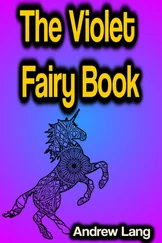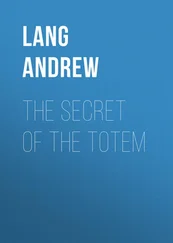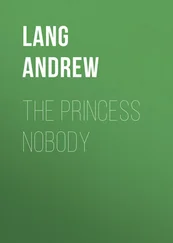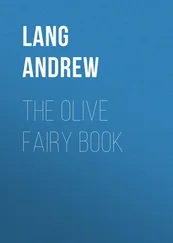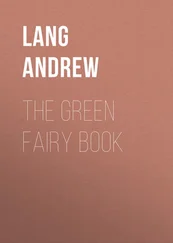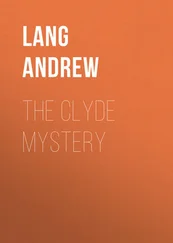Andrew Lang - The Mystery of Mary Stuart
Здесь есть возможность читать онлайн «Andrew Lang - The Mystery of Mary Stuart» — ознакомительный отрывок электронной книги совершенно бесплатно, а после прочтения отрывка купить полную версию. В некоторых случаях можно слушать аудио, скачать через торрент в формате fb2 и присутствует краткое содержание. Жанр: foreign_antique, foreign_prose, на английском языке. Описание произведения, (предисловие) а так же отзывы посетителей доступны на портале библиотеки ЛибКат.
- Название:The Mystery of Mary Stuart
- Автор:
- Жанр:
- Год:неизвестен
- ISBN:нет данных
- Рейтинг книги:4 / 5. Голосов: 1
-
Избранное:Добавить в избранное
- Отзывы:
-
Ваша оценка:
- 80
- 1
- 2
- 3
- 4
- 5
The Mystery of Mary Stuart: краткое содержание, описание и аннотация
Предлагаем к чтению аннотацию, описание, краткое содержание или предисловие (зависит от того, что написал сам автор книги «The Mystery of Mary Stuart»). Если вы не нашли необходимую информацию о книге — напишите в комментариях, мы постараемся отыскать её.
The Mystery of Mary Stuart — читать онлайн ознакомительный отрывок
Ниже представлен текст книги, разбитый по страницам. Система сохранения места последней прочитанной страницы, позволяет с удобством читать онлайн бесплатно книгу «The Mystery of Mary Stuart», без необходимости каждый раз заново искать на чём Вы остановились. Поставьте закладку, и сможете в любой момент перейти на страницу, на которой закончили чтение.
Интервал:
Закладка:
Presently, her temper outworn by the perpetual thwartings which checked her every movement, and regardless of the opposition of Moray, of the Hamiltons, of Argyll, and of the whole Protestant community, Mary wedded Darnley (July 29, 1565). Her adversaries assembled in arms, secretly encouraged by Elizabeth, and what Kirkcaldy of Grange had prophesied occurred: Mary ‘shook Bothwell out of her pocket’ at her opponents. In July, she sent Hepburn of Riccartoun to summon him back from France. Riccartoun was captured by the English, but Bothwell, after a narrow escape, presented himself before Mary on September 20. By October, Moray, the Hamiltons, and Argyll were driven into England or rendered harmless. Randolph now reported that Bothwell and Atholl were all-powerful. The result was ill feeling between Darnley and Bothwell. Darnley wished his father, Lennox, to govern on the Border, but Mary gave the post to Bothwell. [28] Calendar, Bain, ii. 223.
Her estrangement from Darnley had already begun. Jealousy of Mary’s new secretary, Riccio, was added.
The relations between Darnley, Bothwell, Mary, and Riccio, between the crushing of Moray’s revolt, in October 1565, and the murder of the Italian Secretary, in March 1566, are still obscure. Was Riccio Mary’s lover? What were the exact causes of the estrangement from Darnley, which was later used as the spring to discharge on Riccio, and on Mary, the wrath of the discontented nobles and Puritans? The Lennox Papers inform us, as to Mary and Darnley, that ‘their love never decayed till their return from Dumfries,’ whence they had pursued Moray into England.
Mary had come back to Edinburgh from Dumfries by October 18, 1565. Riccio was already, indeed by September 22, complained of as a foreign upstart, but not as a lover of Mary, by the rebel Lords. [29] Bain, ii. 213.
The Lennox Papers attribute the estrangement of Mary and Darnley to her pardoning without the consent of the King, her husband, ‘sundry rebels,’ namely the Hamiltons. The pardon implied humiliation and five years of exile. It was granted about December 3. [30] Ibid. ii. 242, 243.
The measure was deeply distasteful to Darnley and Lennox, who had long been at mortal feud, over the heirship to the crown, with the Lennox Stewarts. The pardon is attributed to the influence of ‘Wicked David,’ Riccio. But to pardon perpetually was the function of a Scottish prince. Soon we find Darnley intriguing for the pardon of Moray, Ruthven, and others, who were not Hamiltons. Next, Lennox complains of Mary for ‘using the said David more like a lover than a husband, forsaking her husband’s bed and board very often.’ But this was not before November. The ‘Book of Articles’ put in against Mary by her accusers is often based on Lennox’s papers. It says ‘she suddenly altered the same’ (her ‘vehement love’ of Darnley) ‘about November, for she removed and secluded him from the counsel and knowledge of all Council affairs.’ [31] Hosack, i. 524.
The ‘Book of Articles,’ like Lennox’s own papers, omits every reference to Riccio that can be avoided. The ‘Book of Articles,’ indeed, never hints at his existence. The reason is obvious: Darnley had not shone in the Riccio affair. Moreover the Lennox party could not accuse Mary of a guilty amour before mid November, 1565, for James VI. was born on June 19, 1566. It would not do to discredit his legitimacy. But, as early as September 1565, Bedford had written to Cecil that ‘of the countenance which Mary gave to David he would not write, for the honour due to the person of a Queen.’ [32] Cal. For. Eliz. 1564-5, 464.
Thus, a bride of six weeks, Mary was reported to be already a wanton! Moreover, on October 13, 1565, Randolph wrote from Edinburgh that Mary’s anger against Moray (who had really enraged her by rising to prevent her from marrying Darnley) came from some dishonourable secret in Moray’s keeping, ‘not to be named for reverence sake.’ He ‘has a thing more strange’ even than the fact that Mary ‘places Bothwell in honour above every subject that she hath.’ As the ‘thing’ is not a nascent passion for Bothwell, it may be an amour with Riccio. [33] Bain, ii. 222-223.
Indeed, on October 18, 1565, he will not speak of the cause of mischief, but hints at ‘a stranger and a varlet,’ Riccio. [34] Bain, ii. 225. Cal. For. Eliz. 1564-5, 464, 495. Hay Fleming, pp. 380, 381.
Randolph and the English diplomatists were then infuriated against Mary, who had expelled their allies, Moray and the rest, discredited Elizabeth, their paymistress, and won over her a diplomatic victory. Consequently this talk of her early amour with Riccio, an ugly Milanese musician, need not be credited. For their own reasons, the Lennox faction dared not assert so early a scandal.
They, however, insisted that Mary, in November, ‘removed and secluded’ Darnley from her Council. To prevent his knowing what letters were written, when he signed them with her, she had his name printed on an iron stamp, ‘and used the same in all things ,’ in place of his subscription. This stamp was employed in affixing his signature to the ‘remission’ to the Hamiltons. [35] Miss Strickland avers that ‘existing documents afford abundant proof, that whenever Darnley and the Queen were together, his name was written by his own hand.’
In fact, Darnley’s ambitions were royal, but he had an objection to the business which kings are well paid for transacting. Knox’s continuator makes him pass ‘his time in hunting and hawking, and such other pleasures as were agreeable to his appetite, having in his company gentlemen willing to satisfy his will and affections.’ He had the two Anthony Standens, wild young English Catholics. While Darnley hunted and hawked, Lennox ‘lies at Glasgow’ (where he had a castle near the Cathedral), and ‘takes, I hear, what he likes from all men,’ says Randolph. [36] October 31, 1565. Bain, ii. 232.
He writes (November 6) that Mary ‘above all things desires her husband to be called King.’ [37] Bain, ii. 234.
Yet it is hinted that she is in love with Riccio! On the same date ‘oaths and bands are taken of all that … acknowledge Darnley king, and liberty to live as they list in religion.’ On November 19, Mary was suffering from ‘her old disease that commonly takes her this time of year in her side.’ It was a chronic malady: we read of it in the Casket Letters. From November 14 to December 1, she was ill, but Darnley hunted and hawked in Fife, from Falkland probably, and was not expected to return till December 4. [38] Randolph to Cecil, Nov. 19, Dec. 1, 1565. Bain, ii. 241, 242.
Lennox was being accused of ‘extortions’ at Glasgow, complained of ‘to the Council.’ Châtelherault was ‘like to speed well enough in his suit to be restored,’ after his share in Moray’s rebellion.
Darnley was better engaged, perhaps, in Fife, than in advocating his needy and extortionate father before the Council, or in opposing the limited pardon to old Châtelherault. In such circumstances, Darnley was often absent, either for pleasure, or because his father was not allowed to despoil the West; while the Hamilton chief, the heir presumptive of the throne, was treated as a repentant rebel, rather than as a feudal enemy. He was an exile, and lost his ‘moveables’ and all his castles, so he told Elizabeth. [39] Bain, ii. 242.
During, or after, these absences of Darnley, that ‘iron stamp,’ of which Buchanan complains, was made and used.
The Young Fool had brought this on himself. Mary already, according to Randolph, had been heard to say that she wished Lennox had never entered Scotland ‘in her days.’ Lennox, the father-in-law of the Queen, was really a competitor for the crown. If Mary had no issue, he and Darnley desired the crown to be entailed on them, passing over the rightful heirs, the House of Hamilton. A father and son, with such preoccupations, could not safely be allowed to exercise power. The father would have lived on robbery, the son would have shielded him. Yet, so occupied was Darnley with distant field sports, that, says Buchanan, he took the affair of the iron stamp easily. [40] Buchanan, Historia , 1582, fol. 210.
Next comes a terrible grievance. Darnley was driven out, in the depth of winter, to Peebles. There was so much snow, the roads were so choked, the country so bare, that Darnley might conceivably have been reduced to ‘halesome parritch.’ Luckily the Bishop of Orkney, the jovial scoundrel, ‘Bishop Turpy,’ who married Mary to Bothwell, and then denounced her to Elizabeth, had brought wine and delicacies. This is Buchanan’s tale. A letter from Lennox to Darnley, of December 20, 1565, represents the father as anxious to wait on ‘Your Majesty’ at Peebles, but scarcely expecting him in such stormy weather. Darnley, doubtless, really went for the sake of the deer: which, in Scotland, were pursued at that season. He had been making exaggerated show of Catholicism, at matins on Christmas Eve, while Mary sat up playing cards. [41] Bain, ii. 247.
Presently he was to be the ally of the extreme Protestants, the expelled rebels. Moray was said not to have two hundred crowns in the world, and was ready for anything, in his English retreat. Randolph (Dec. 25) reported ‘private disorders’ between Darnley and Mary, ‘but these may be but amantium iræ ,’ lovers’ quarrels. [42] The Foreign Calendar cites Randolph up to the place where amantium iræ is quoted, but omits that. The point is important, if it indicates that Randolph had ceased to believe in Mary’s amour with Riccio. Cf. Bain, ii. 248.
Yet, two months before he had hinted broadly that Riccio was the object of Mary’s passion.
Интервал:
Закладка:
Похожие книги на «The Mystery of Mary Stuart»
Представляем Вашему вниманию похожие книги на «The Mystery of Mary Stuart» списком для выбора. Мы отобрали схожую по названию и смыслу литературу в надежде предоставить читателям больше вариантов отыскать новые, интересные, ещё непрочитанные произведения.
Обсуждение, отзывы о книге «The Mystery of Mary Stuart» и просто собственные мнения читателей. Оставьте ваши комментарии, напишите, что Вы думаете о произведении, его смысле или главных героях. Укажите что конкретно понравилось, а что нет, и почему Вы так считаете.


